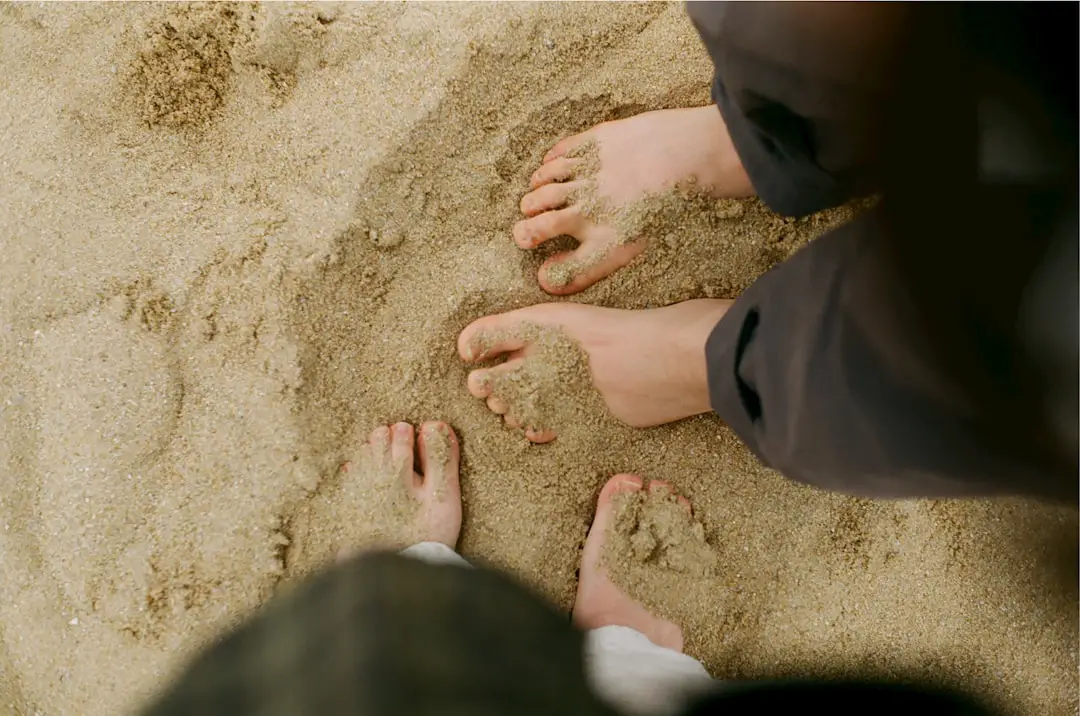Hiking is an exhilarating activity that allows individuals to connect with nature, explore new terrains, and enjoy physical fitness. However, it also poses various risks, particularly to the feet and toes. The importance of protecting your toes while hiking cannot be overstated.
The toes are crucial for balance and stability, acting as the foundation for the entire foot. When hiking on uneven terrain, the toes are subjected to significant stress and potential injury. Blisters, bruises, and even fractures can occur if proper precautions are not taken.
Therefore, ensuring that your toes are well-protected is essential for a safe and enjoyable hiking experience. Moreover, the right protection can enhance performance and comfort during long hikes. When toes are properly taped or cushioned, hikers can avoid distractions caused by pain or discomfort, allowing them to focus on the trail ahead.
This is particularly important during extended hikes where fatigue can set in. By taking proactive measures to protect the toes, hikers can significantly reduce the risk of injury and improve their overall hiking experience. The benefits of toe protection extend beyond mere comfort; they can also prevent long-term damage that could affect mobility in the future.
Key Takeaways
- Protecting your toes while hiking is crucial for preventing injuries and maintaining comfort on the trail.
- Materials needed for toe taping include adhesive tape, scissors, and possibly moleskin or blister pads.
- Proper toe taping technique involves cleaning and drying the toes, applying padding if necessary, and taping the toes to prevent friction and impact.
- Toe taping can help prevent common hiking injuries such as blisters, black toenails, and toe bruising.
- To maintain toe taping during a hike, reapply tape as needed, keep feet dry, and adjust footwear for comfort.
- Remove toe taping when it becomes loose or uncomfortable, and care for your toes by cleaning and moisturizing them.
- Alternative methods for protecting your toes while hiking include wearing proper footwear, using toe caps or shields, and using toe socks.
- In conclusion, toe taping offers numerous benefits for hikers, including injury prevention, comfort, and the ability to continue enjoying the outdoors.
Materials Needed for Toe Taping
To effectively tape your toes for hiking, certain materials are essential to ensure both protection and comfort. First and foremost, medical tape or athletic tape is crucial. This type of tape is designed to adhere well to the skin while allowing for some flexibility, which is important for movement during a hike.
It is advisable to choose a tape that is breathable and hypoallergenic to minimize the risk of skin irritation. Additionally, pre-wrap or underwrap can be beneficial as a base layer to protect the skin from direct contact with the adhesive tape.
These materials help absorb moisture and reduce friction, which are common culprits in toe injuries. A pair of scissors will also be necessary for cutting the tape to the desired length.
Step-by-Step Guide to Proper Toe Taping Technique

To achieve effective toe taping, it is important to follow a systematic approach. Begin by preparing your toes and feet; ensure they are clean and dry. If you have any existing injuries or blisters, gently clean the area with antiseptic wipes and allow it to dry completely.
Next, if you are using pre-wrap or underwrap, apply it around the base of the toe and up to the ball of the foot. This layer serves as a protective barrier against the adhesive tape. Once the base layer is in place, take your medical or athletic tape and cut several strips of varying lengths depending on the size of your toes.
Start by wrapping the tape around the base of the toe you wish to protect, making sure it is snug but not too tight to restrict blood flow. Gradually wrap the tape around the toe in a spiral motion, overlapping each layer slightly for added support. If you are taping multiple toes, consider using a figure-eight pattern that connects adjacent toes for additional stability.
Finally, secure the end of the tape by pressing it down firmly to ensure it adheres well.
Common Toe Injuries While Hiking and How Toe Taping Can Help Prevent Them
| Toes Injuries | Prevention with Toe Taping |
|---|---|
| Blister | Toe taping can reduce friction and prevent blisters on the toes. |
| Black toenail | Proper taping can help reduce pressure on the toenails and prevent black toenails. |
| Ingrown toenail | Taping can help keep the toenails in place and prevent them from growing into the skin. |
| Turf toe | Toe taping can provide support and stability to the toe joint, reducing the risk of turf toe. |
Hikers often encounter a variety of toe injuries that can hinder their outdoor adventures. One common issue is blisters, which occur due to friction between the skin and footwear. Blisters can be painful and may lead to further complications if not treated properly.
Toe taping can help prevent blisters by reducing friction and providing a protective barrier between the skin and shoe. Another frequent injury is toenail trauma, which can happen when toes repeatedly hit the front of the shoe during descents or on uneven terrain. This can lead to bruised or even lost toenails.
Taping can provide additional cushioning around the toenails, minimizing movement and impact that could cause injury. Additionally, conditions such as turf toe—a sprain of the big toe joint—can be mitigated through proper taping techniques that stabilize the toe and limit excessive motion during hikes.
Tips for Maintaining Toe Taping During a Hike
Once your toes are taped, maintaining that protection throughout your hike is crucial for effectiveness. One key tip is to monitor your feet regularly during breaks. Check for any signs of discomfort or irritation that may arise from the tape or from moisture buildup underneath it.
If you notice any issues, consider re-taping or adjusting as necessary. Staying dry is another important factor in maintaining toe taping during a hike. Moisture can weaken adhesive properties and lead to slippage or peeling of the tape.
To combat this, choose moisture-wicking socks that help keep your feet dry and consider using foot powder before putting on socks and shoes. Additionally, if you anticipate wet conditions, waterproof footwear can provide an extra layer of protection against moisture infiltration.
When to Remove Toe Taping and How to Properly Care for Your Toes Afterwards

Knowing when to remove toe taping is just as important as applying it correctly. Generally, it is advisable to remove the tape after your hike or when you no longer need protection for your toes. Leaving tape on for extended periods can lead to skin irritation or infection if moisture gets trapped underneath.
Carefully peel off the tape in a slow manner to avoid damaging the skin; if you encounter resistance, consider using a bit of warm water or adhesive remover to ease its removal. After removing the tape, it’s essential to care for your toes properly. Cleanse the area with mild soap and water to remove any adhesive residue or dirt that may have accumulated during your hike.
Pat your feet dry gently with a clean towel and inspect them for any signs of injury or irritation. If you notice any blisters or abrasions, treat them with antiseptic ointment and cover them with a sterile bandage until they heal.
Alternative Methods for Protecting Your Toes While Hiking
While toe taping is an effective method for protecting your toes during hikes, there are alternative strategies worth considering as well. One popular option is wearing specialized hiking socks designed with extra cushioning in key areas such as the toe box and heel. These socks often feature moisture-wicking properties that help keep feet dry while providing additional padding against impacts.
Another alternative is using toe caps or protective sleeves made from silicone or gel materials that fit over individual toes.
These devices provide cushioning and protection without requiring taping techniques. They can be particularly useful for individuals who experience chronic toe issues or those who prefer not to use adhesive products on their skin.The Benefits of Toe Taping for Hiking
Toe taping offers numerous benefits for hikers looking to protect their feet during outdoor adventures. By reducing friction and providing support, taping can help prevent common injuries such as blisters and toenail trauma while enhancing overall comfort on the trail. With proper materials and techniques, hikers can ensure their toes remain safe from harm, allowing them to focus on enjoying their journey through nature’s beauty without distraction from pain or discomfort.
Incorporating toe taping into your hiking routine not only promotes foot health but also contributes to a more enjoyable experience in the great outdoors. Whether you’re embarking on a short day hike or tackling a multi-day trek, taking steps to protect your toes will pay dividends in terms of comfort and performance on the trail.
If you’re planning a hiking trip and want to make sure your feet are well-protected, consider checking out this article on the best waterproof sneakers for travel. Having the right footwear can make a big difference in your comfort and safety while out on the trails. And don’t forget to also learn how to tape your toes for hiking to prevent blisters and discomfort during your adventures.
FAQs
What is the purpose of taping toes for hiking?
Taping toes for hiking helps to prevent blisters, hot spots, and discomfort caused by friction and pressure on the toes during long hikes. It can also provide support and stability for the toes, especially when navigating uneven terrain.
What materials are needed to tape toes for hiking?
To tape toes for hiking, you will need adhesive tape or blister pads specifically designed for foot care, as well as scissors to cut the tape to the appropriate size. Some hikers also use moleskin or athletic tape for added protection.
How do you tape toes for hiking?
To tape toes for hiking, start by cleaning and drying the toes thoroughly. Then, apply the adhesive tape or blister pads to areas of the toes that are prone to rubbing or blistering, such as between the toes or on the tops and sides of the toes. It’s important to apply the tape smoothly and without wrinkles to avoid causing additional friction.
How long should you keep the tape on your toes during a hike?
The length of time to keep the tape on your toes during a hike can vary depending on individual comfort and the specific conditions of the hike. Some hikers may choose to reapply tape at rest stops or when changing socks, while others may find that the initial taping lasts for the duration of the hike.
Are there any potential risks or drawbacks to taping toes for hiking?
While taping toes for hiking can help prevent blisters and discomfort, it’s important to ensure that the tape is not too tight, as this can restrict circulation and cause additional problems. Additionally, if the tape is not applied smoothly, it can create friction and lead to blisters. It’s important to practice taping techniques before a long hike to ensure proper application.
